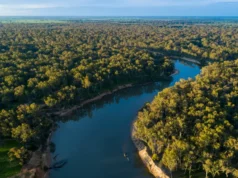
Photo: Ricky French
Rock cairns have been used for centuries to mark routes and guide travellers – even here in New Zealand. And if they could, they’d have some good stories to tell.
I was a 12-year-old in 1990 when I set off with my uncles and cousin to tramp the Tararua Northern Crossing.
We began just east of Levin, and the trip did not get off to a good start. We followed the Ohau River, looking forward to a leisurely lunch at South Ohau Hut on the riverbank. But after sloshing upstream for more hours than expected, there was no sign of the hut. We sat down to consult the map and realised with horror that we’d missed a fork and were on the north branch of the river instead of the south. Shaking our heads at our stupidity, we trudged back to the forks then shook our heads some more. How did we miss such an obvious junction? Were we that unobservant? If only there had been some sort of marker to alert us to this critical confluence. If only someone had built a cairn…
Look around, cairns are everywhere. Marking tracks, high points and turn-offs; acting as gravestones or memorials; sometimes there for no reason at all. Assembled literally from stuff lying around, they are nature’s most natural navigation aid, and one of civilisation’s oldest constructions. Cairns have been used for centuries across countless cultures. In their purest tramping form they guide travellers along ridgelines and spurs, like a trail of breadcrumbs, and mark re-entry points for tracks on the far side of rivers or slips. They can be transient or enduring, official or casual, useful or useless. They also serve purposes not many people know about. Some even hold secrets.
No qualifications are needed to build a cairn, anyone can have a go, and in New Zealand’s mountains, they most assuredly do. Although generally built to guide those who come later, cairns can also serve a more selfish purpose. Solo climbers tackling an unfamiliar peak will often build small cairns on the way up, so they don’t lose their way on the descent should the weather turn. Tidy climbers will usually knock them over on the way down, leaving no trace.
Despite their informal appearance, DOC deems cairns a legitimate way of marking tracks and routes. DOC’s Brian Dobbie wrote the department’s Track Service Standards handbook, which states that markers (orange triangles), poles or cairns can all be used to mark tracks. Therefore, many of the cairns you see would likely have been constructed by DOC, not by trampers. As well as being quick to build and fit for purpose, bean counters in Wellington are happy – cairns being constructed entirely from materials at hand at no cost other than staff time.
While most cairns earn their place, more recently – and more controver- sially – they’ve been propagating wildly as the social media-driven craze of ‘rock stacking’ sweeps the world, and raises the ire of many. The New York Times reports that between 2016–2017 volunteers destroyed nearly 35,000 rock stacks on two mountains in Acadia National Park in Maine. In Australia, Queensland National Parks, frustrated with the proliferation of stone stacks in Cania Gorge, inland from Bundaberg, announced fines of more than $750 for ‘constructing an unauthorised structure or works in parks’. Is that a police state gone too far, or a justified punishment to deter reckless stone stackers?
Read the full story here


